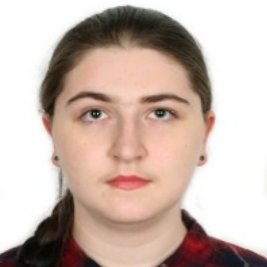International Journal of Computer Network and Information Security (IJCNIS)
IJCNIS Vol. 17, No. 1, 8 Feb. 2025
Cover page and Table of Contents: PDF (size: 2543KB)
Recognizing Fakes, Propaganda and Disinformation in Ukrainian Content based on NLP and Machine-learning Technology
PDF (2543KB), PP.92-127
Views: 0 Downloads: 0
Author(s)
Index Terms
Information Security, Cybersecurity, Content, NLP, Propaganda, Disinformation, Fake News, Message, Text, Linguistic Analysis, Artificial Intelligence, Cyber Warfare, Machine Learning, Information Technology
Abstract
The project envisages the creation of a complex system that integrates advanced technologies of machine learning and natural language processing for media content analysis. The main goal is to provide means for quick and accurate verification of information, reduce the impact of disinformation campaigns and increase media literacy of the population. Research tasks included the development of algorithms for the analysis of textual information, the creation of a database of fakes, and the development of an interface for convenient access to analytical tools. The object of the study was the process of spreading information in the media space, and the subject was methods and means for identifying disinformation. The scientific novelty of the project consists of the development of algorithms adapted to the peculiarities of the Ukrainian language, which allows for more effective work with local content and ensures higher accuracy in identifying fake news. Also, the significance of the project is enhanced by its practical value, as the developed tools can be used by government structures, media organizations, educational institutions and the public to increase the level of information security. Thus, the development of this project is of great importance for increasing Ukraine's resilience to information threats and forming an open, transparent information society.
Cite This Paper
Victoria Vysotska, Krzysztof Przystupa, Yurii Kulikov, Sofiia Chyrun, Yuriy Ushenko, Zhengbing Hu, Dmytro Uhryn, "Recognizing Fakes, Propaganda and Disinformation in Ukrainian Content based on NLP and Machine-learning Technology", International Journal of Computer Network and Information Security(IJCNIS), Vol.17, No.1, pp.92-127, 2025. DOI:10.5815/ijcnis.2025.01.08
Reference
[1]N. Khairova, A. Galassi, F. Lo Scudo, B. Ivasiuk, I. Redozub, “Unsupervised approach for misinformation detection in Russia-Ukraine war news,” CEUR Workshop Proceedings, Vol-3722, 2024, pp. 21-36.
[2]V. Vysotska, D. Shavaiev, M. Greguš, Y. Ushenko, Z. Hu, D. Uhryn, "Information Technology for Gender Voice Recognition Based on Machine Learning Methods", International Journal of Modern Education and Computer Science, Vol.16, No.5, pp. 65-87, 2024.
[3]Victoria Vysotska, Krzysztof Przystupa, Lyubomyr Chyrun, Serhii Vladov, Yuriy Ushenko, Dmytro Uhryn, Zhengbing Hu, "Disinformation, Fakes and Propaganda Identifying Methods in Online Messages Based on NLP and Machine Learning Methods", International Journal of Computer Network and Information Security, Vol.16, No.5, pp.57-85, 2024.
[4]O. Prokipchuk, et. al., "Intelligent Analysis of Ukrainian-language Tweets for Public Opinion Research based on NLP Methods and Machine Learning Technology", International Journal of Modern Education and Computer Science, Vol.15, No.3, pp. 70-93, 2023.
[5]X. Men, V. Y. Mariano, "Explainable Fake News Detection Based on BERT and SHAP Applied to COVID-19", International Journal of Modern Education and Computer Science, Vol.16, No.1, pp. 11-22, 2024.
[6]M. Hartmann, Y. Golovchenko, I. Augenstein, “Mapping (dis-)information flow about the MH17 plane crash,”/ arXiv. https://arxiv.org/abs/1910.01363.
[7]B. Akinyemi, O. Adewusi, A. Oyebade, "An Improved Classification Model for Fake News Detection in Social Media", International Journal of Information Technology and Computer Science, Vol.12, No.1, pp.34-43, 2020.
[8]S. K. Kiran, M. Shashi, K. B. Madhuri, "Multi-stage Transfer Learning for Fake News Detection Using AWD-LSTM Network", International Journal of Information Technology and Computer Science, Vol.14, No.5, pp. 58-69, 2022.
[9]A. S. Noah, N. E. Ghannam, G. A. Elsharawy, A. S. Desuky, "An Intelligent System for Detecting Fake Materials on the Internet", International Journal of Modern Education and Computer Science, Vol.15, No.5, pp. 42-59, 2023.
[10]V. Vysotska, et al., "NLP tool for extracting relevant information from criminal reports or fakes/propaganda content." 2022 IEEE 17th International Conference on Computer Sciences and Information Technologies (CSIT) (pp. 93-98). IEEE, 2022. DOI: 10.1109/CSIT56902.2022.10000563
[11]Afeez Ayomide Olagunju, Iyabo Olukemi Awoyelu, "Performance Evaluation of Fake News Detection Models", International Journal of Information Technology and Computer Science, Vol.16, No.6, pp.89-100, 2024.
[12]S. Bauskar, V. Badole, P. Jain, M. Chawla, "Natural Language Processing based Hybrid Model for Detecting Fake News Using Content-Based Features and Social Features", International Journal of Information Engineering and Electronic Business, Vol.11, No.4, pp. 1-10, 2019.
[13]S. Mazepa, et al., "Relationships Knowledge Graphs Construction Between Evidence Based on Crime Reports." 2022 IEEE 17th International Conference on Computer Sciences and Information Technologies (CSIT) (pp. 165-171). IEEE, 2022. DOI: 10.1109/CSIT56902.2022.10000587
[14]A. M. Meligy, H. M. Ibrahim, M. F. Torky, “Identity Verification Mechanism for Detecting Fake Profiles in Online Social Networks,” International Journal of Computer Network and Information Security, Vol.9(1), 2017, pp.31-39.
[15]Ogunsuyi Opeyemi J., Adebola K. OJO, "K-Nearest Neighbors Bayesian Approach to False News Detection from Text on Social Media", International Journal of Education and Management Engineering, Vol.12, No.4, pp. 22-32, 2022.
[16]V. A. Oliinyk, et. al., “Propaganda Detection in Text Data Based on NLP and Machine Learning,” CEUR Workshop Proceedings, Vol. 2631. 2020, pp. 132-144.
[17]Dharmaraj R. Patil, Rajnikant B. Wagh, Vipul D. Punjabi, Shailendra M. Pardeshi, "Enhanced Phishing URLs Detection using Feature Selection and Machine Learning Approaches", International Journal of Wireless and Microwave Technologies, Vol.14, No.6, pp. 48-67, 2024.
[18]Aya S. Noah, Naglaa E. Ghannam, Gaber A. Elsharawy, Abeer S. Desuky, "An Intelligent System for Detecting Fake Materials on the Internet", International Journal of Modern Education and Computer Science, Vol.15, No.5, pp. 42-59, 2023.
[19]A. Mykytiuk, et. al., “Technology of Fake News Recognition Based on Machine Learning Methods,” CEUR Workshop Proceedings, Vol-3387, 2023, pp. 311-330.
[20]I. Afanasieva, N. Golian, V. Golian, A. Khovrat, K. Onyshchenko, “Application of Neural Networks to Identify of Fake News,” CEUR Workshop Proceedings, Vol-3396, 2023, pp. 346-358.
[21]A. Wierzbicki, A. Shupta, O. Barmak, “Synthesis of model features for fake news detection using large language models,” CEUR Workshop Proceedings, Vol. 3722, 2024, pp. 50-65.
[22]Y. Burov, et al., "Intelligent Network Architecture Development for E-Business Processes Based on Ontological Models", International Journal of Information Engineering and Electronic Business, Vol.16, No.5, pp. 1-54, 2024.
[23]A. Shupta, O. Barmak, A. Wierzbicki, T. Skrypnyk, “An Adaptive Approach to Detecting Fake News Based on Generalized Text Features,” CEUR Workshop Proceedings, Vol-3387, 2023, pp. 300-310.
[24]J. Garcia-Marín, A. Calatrava, “The Use of Supervised Learning Algorithms in Political Communication and Media Studies: Locating Frames in the Press,” Pamplona, Vol. 31(3), 2018, pp. 175-188. DOI: 10.15581/003.31.3.175-188.
[25]Victoria Vysotska, Andrii Berko, Yevhen Burov, Dmytro Uhryn, Zhengbing Hu, Valentyna Dvorzhak, "Information Technology for the Data Integration in Intelligent Systems of Business Analytics", International Journal of Information Engineering and Electronic Business, Vol.16, No.4, pp. 66-92, 2024.
[26]V. Vysotska, A. Berko, Y. Burov, D. Uhryn, Z. Hu, V. Dvorzhak, "Information Technology for the Data Integration in Intelligent Systems of Business Analytics", International Journal of Information Engineering and Electronic Business, Vol.16, No.4, pp. 66-92, 2024.
[27]C. Bjola “Propaganda in the digital age,” Global Affairs, Vol. 3(3), 2017, pp. 189-191. DOI: 10.1080/23340460.2017.1427694.
[28]R. A. Dar, Dr. R. Hashmy, “A Survey on COVID-19 related Fake News Detection using Machine Learning Models,” CEUR Workshop Proceedings, Vol-3426, 2023, pp. 36-46.
[29]Propaganda detection. https://www.kaggle.com/datasets/vladimirsydor/propaganda-detection-our-data.
[30]Fake News Detection, https://www.kaggle.com/code/ilaydadu/fake-news-detection-with-nlp-and-lstm.
[31]Fake News Detection, https://www.kaggle.com/code/superrajdoor/fake-news-detection-with-lstm-and-nlp-prorew1/input%20//
[32]Propaganda Definitions. https://propaganda.qcri.org/annotations/definitions.html.
[33]texty.org.ua. How Texty detects and makes sense of manipulative news. https://medium.com/@texty.org.ua/how-texty-detects-and-makes-sense-of-manipulative-news-1f43d33936eb.






